
By Susan Schnur - Oregon State University
October 5, 2014
Choosing my Top 5 Geology Moments was not easy. A good geology moment is striking and memorable, such as when we see a sharp color change or a contact between two rock units. Large geologic landforms such as cracks, terraces, and collapse features can also leave us in awe of the ability of earth forces to reshape mountains. In the end, though, the most memorable geology moments for me were those that led to a good scientific discussion. So below are my top geology moments of the cruise.
Coming up through lava flows while exploring along the Atlantis II Seamounts, we suddenly reached a layer of white carbonate. This unit signifies a pause of hundreds to thousands of years between the eruption of two lava flows. This is not uncommon on seamounts, but it’s striking because it reminds us of how many different ways there are to form a rock.
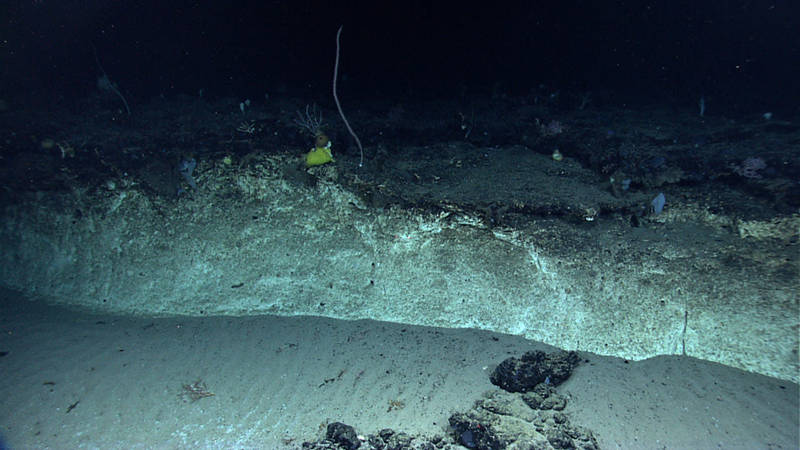
Atlantis II Seamount Inter-flow Carbonate Layer. Image courtesy of the NOAA Office of Ocean Exploration and Research, Exploring Atlantic Canyons and Seamounts 2014. Download larger version (jpg, 1.7 MB).
I had been hoping to see primary lava flow textures on the seamounts, but the thick manganese crust coating all surfaces hid most traces of stretching, extrusion, and flow. These drainbacks remind us that at one time, hot lava was being erupted here.
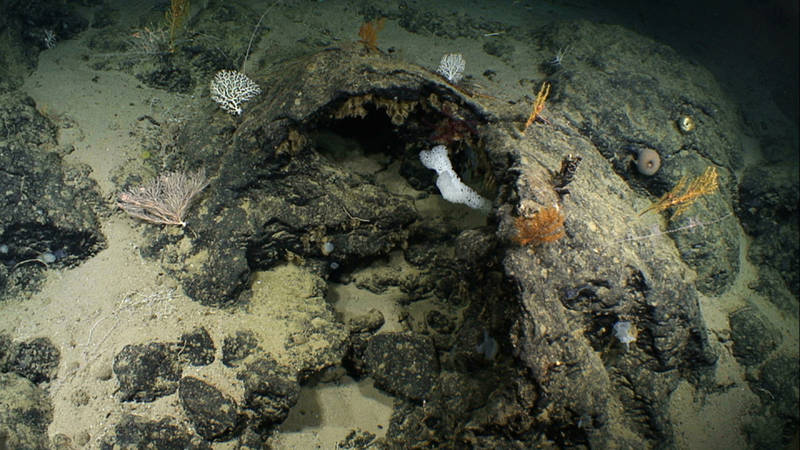
Kelvin Seamount Pillow Lava Drainbacks. Image courtesy of the NOAA Office of Ocean Exploration and Research, Exploring Atlantic Canyons and Seamounts 2014. Download larger version (jpg, 1.8 MB).
Near the top of Hendrickson Canyon, we encountered a distinct boundary between an underlying chalk unit and an overlying mudstone unit. A distinct color change and the interesting deformation structures in the mudstone made for good imagery and good discussion.
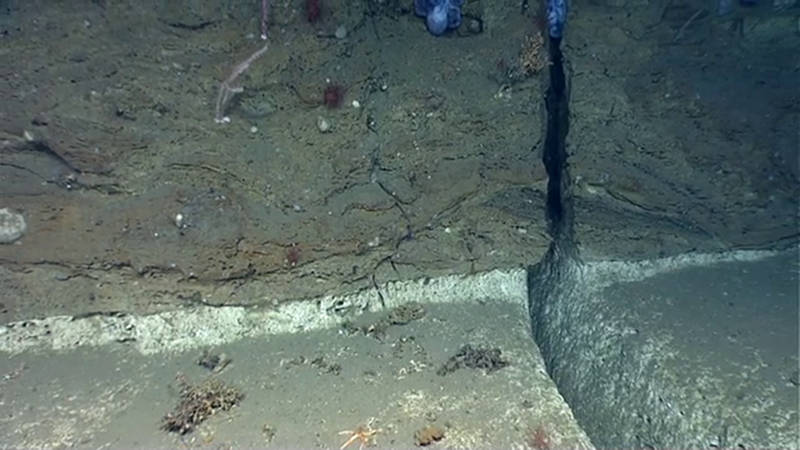
Hendrickson Canyon Sedimentary Contact: Near the top of the canyon we encountered a distinct boundary between an underlying chalk unit and an overlying mudstone unit. A distinct color change and the interesting deformation structures in the mudstone made for good imagery and good discussion. Image courtesy of the NOAA Office of Ocean Exploration and Research, Exploring Atlantic Canyons and Seamounts 2014. Download image (jpg, 57 KB).
Geology can’t take full credit for this exciting interval. The octopods inhabiting every nook and cranny certainly made this series of caves interesting for geologists, biologists, and non-scientists alike. Behind the scenes, this find also led to a string of emails and chat room discussions of various hypotheses for the formation of the caves.
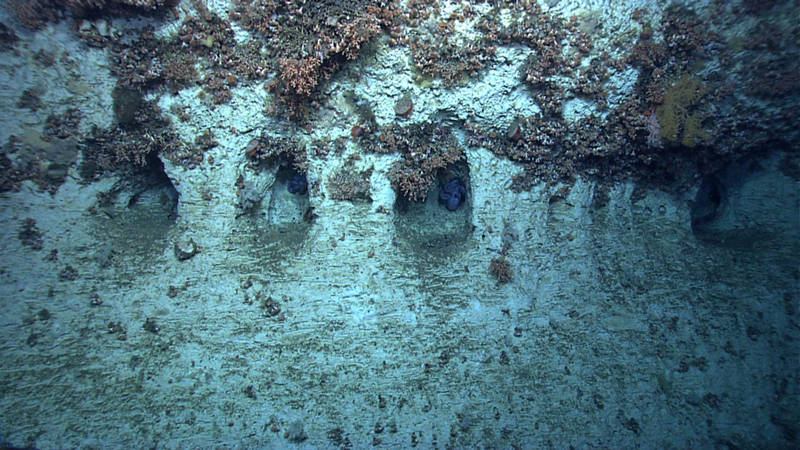
Unnamed Canyon Octopus Grotto: Geology can’t take full credit for this exciting interval. The octopi inhabiting every nook and cranny certainly made this series of caves interesting for geologists, biologists and non-scientists alike. Behind the scenes this find also led to a string of emails and chat room discussions of various hypotheses for the formation of the caves. Image courtesy of the NOAA Office of Ocean Exploration and Research, Exploring Atlantic Canyons and Seamounts 2014. Download larger version (jpg, 1.4 MB).
Fragmental volcanic material is a major component of most seamounts, so I was surprised that on the cruise so far we had only seen lava flows. Seeing the breccias at Physalia was an exciting change. At one outcrop, pillow lavas appeared to have been extruded into or under a pre-existing breccia pile. This site takes first place for geology moment because this is exactly the sort of puzzle I enjoy solving – using outcrop observations to piece together how a seamount edifice evolves over time.
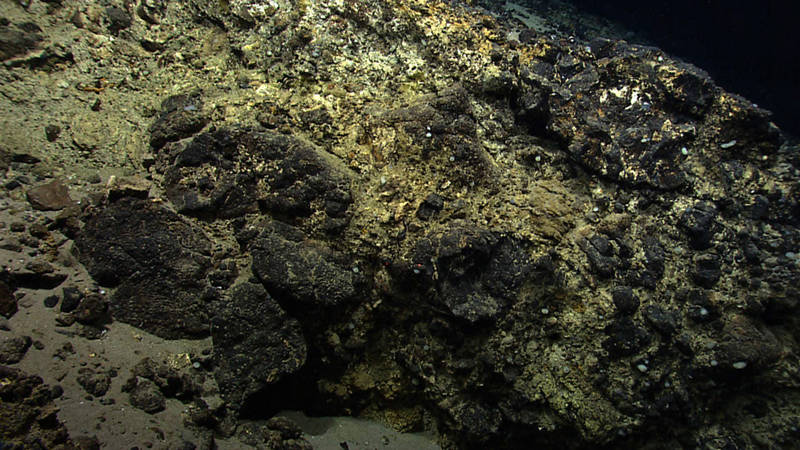
Physalia Seamount Volcaniclastic Breccias: Fragmental volcanic material is a major component of most seamounts, so I was surprised that on the cruise so far we had only seen lava flows. Seeing the breccias at Physalia was an exciting change. At one outcrop, pillow lavas appeared to have been extruded into or under a pre-existing breccia pile. This site takes first place for geology moment because this is exactly the sort of puzzle I enjoy solving – using outcrop observations to piece together how a seamount edifice evolves over time. Image courtesy of the NOAA Office of Ocean Exploration and Research, Exploring Atlantic Canyons and Seamounts 2014. Download larger version (jpg, 1.5 MB).